
Jesus travelled through Israel spreading the message of peace and love and in his travel to various places, he met certain people who devoted their lives to him. Among his disciples, 12 went on to be known as Apostles and in the Synoptic Gospels, St. Thomas gets the 7th or 8th place among the apostles (Image credits - Jesus movie by campus crusaders).

One night Jesus climbed up a hill and prayed the whole night. Next day, when morning broke, he was received at the base of the hill by all the 12 apostles. After meeting each one of them, Jesus and the apostles started on their journey of spreading the message of peace and love. Here, we see Jesus meeting a young Thomas, his disciple, who later will be known as St. Thomas (Image credits - Jesus movie by Campus crusaders).

A painting at the Palayur church - one of the 7 churches that St. Thomas built in Kerala in 52 A.D. This painting depicts the last supper.
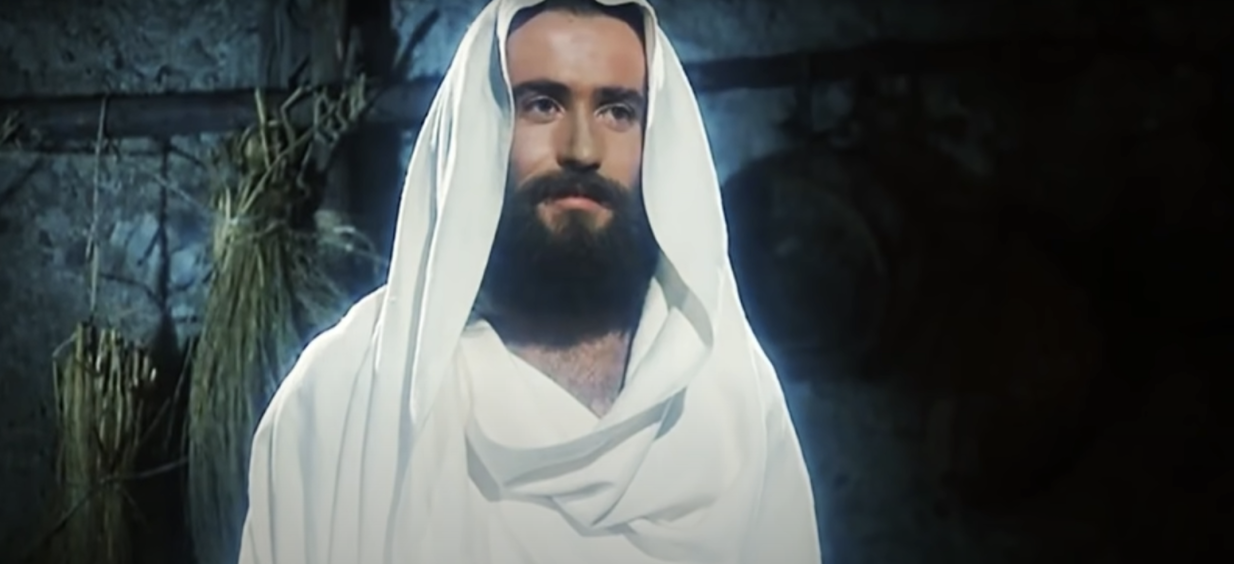
The resurrection of Jesus on the first Sunday after crucifixion in the presence of the 11 apostles, exclusive of Apostle Thomas (Image credit - Jesus movie by Campus Crusades).

When Apostle Thomas was recounted the story of Jesus’s resurrection by the other apostles, he chose not to believe it, stating that he will only believe when he sees it with his own eyes. This was the incident that led St. Thomas to be known as Doubting Thomas. Finally, a week later, Jesus again resurrected, this time, in the presence of Apostle Thomas and beckoned him to count the nail marks on his body and believe in him. Apostle Thomas devoted himself to Jesus and made his famous proclamation “My Lord, My God”.

After his resurrection, Jesus commissioned and empowered his disciples to establish the kingdom of God through his words. “Go into all the world and proclaim the good news to the whole creation. The one who believes and is baptized will be saved; but the one who does not believe will be condemned”(Mark 16, 15-16). All the apostles moved to the nooks and corners of the world with the mission entrusted to them by Christ. And that is how St. Thomas began his journey eastward towards India (Image credit - Jesus by Campus Crusades).

Following the words of Jesus, St. Thomas arrived in Southern India. He travelled to the Malabar Coast by ship and landed here in India on 21st November 52 A.D. at Malinkara near Muziris or Cranganore (now, Kodungallur).

There was the presence of a lot of Jewsish communities at that time in Kerala and active trade routes were established between the Malabar Coast and middle-eastern and western countries, which made it easier for St. Thomas to travel over to India and carry out his mission. It can be assumed that it is because of the habitation of the large Jewish community that encouraged St.Thomas to come to India, as he himself was a Jew.
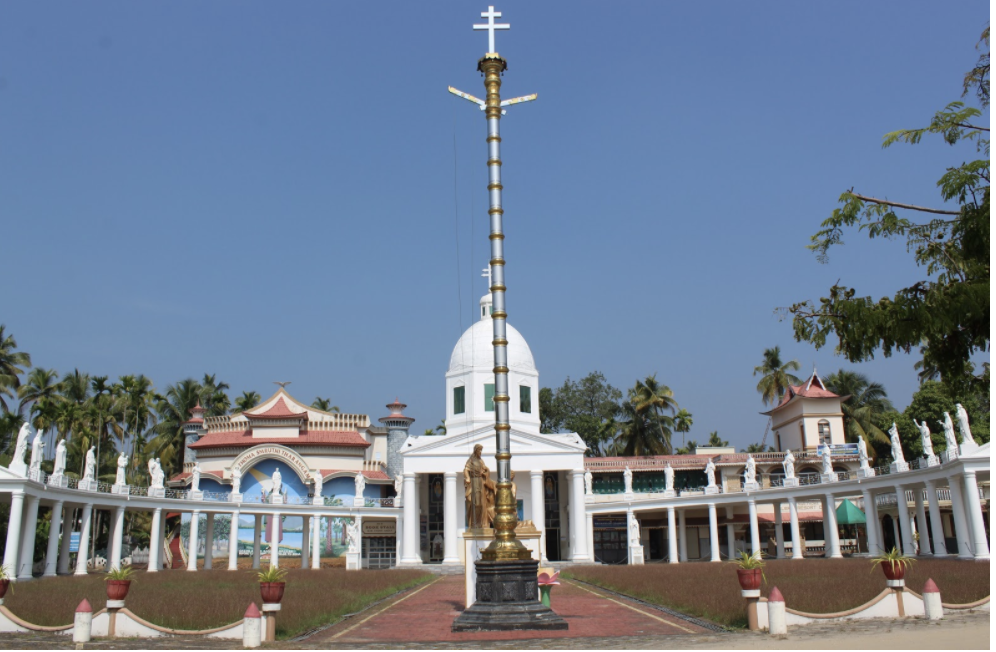
The Marthoma Pontifical Shrine, Kodungallur - the first church to be built by St. Thomas. This photo is of the latest building of the church. It is said that the original location where the church was built was destroyed in the floods of 1341, and the new location where the church resides now was later built by the community of faithfuls.

St Thomas Syro-Malabar Catholic Church, Palayoor - the second church that was built by St. Thomas. It is said to be the first Christian church of India, only because the present church is only the renovation of the old church built by the apostle and its place is not changed.

St. Thomas Kottakkavu Forane Church, North Paravur - This is the third church built by the apostle. The original church was destroyed in the attack by Tipu Sultan in the year 1789, but the original “aalthara” or the main Shrine has been preserved and is the part of the smaller prayer room and the new holy shrine is the new bigger church building.

St. Thomas Church, Kokkamangalam, is the fourth church built by the apostle and it is found on the western shore of the lake Vembanattu, in Cherthalai, Kochi, Kerala, India. St. Thomas reached here on his way to Nilakkal from Kottakkavu.

St. Thomas Church, Nilakkal - the fifth church established by St. Thomas. The civil war from 1311 to 1315 led to the destruction of Nilackal and the St. Thomas Church and the natives left the place. Finally, in the years between 1976 & 1979, a place was granted by Kerala government to build a church in the remembrance of the church built by the apostle.

Our Lady of Purification Church, Kollam - the sixth church to be established by the apostle. According to traditional belief, the church established by the apostle stood here till the 10th century and was demolished by sea erosion and the current church was rebuilt later in a different spot nearby to the location of the original church.

St. Mary’s Orthodox Syrian Church, Niranam - this was the seventh and final church to be established in Kerala by the apostle. Niranam is surrounded by branches of the Pamba river and it is therefore believed that the Apostle reached Niranam in a big boat and even today, there is a tributary of river Pampa - “Thomathukadavu” which might have emerged from ‘Thoma Vanna Kadavu’ meaning the ‘jetty where Thomas came,’ which is believed to be the spot where St. Thomas disembarked the ship.

St Mary’s Orthodox Church, Thiruvithamcode - the eight church built by the apostle in Tamil Nadu. This is known as “arapally” or ‘the half church’ and is the only church to be built in Tamil Nadu by the apostle.

During his Apostolate mission in India, which spanned over almost 2 decades, St. Thomas ardently spread the message of peace & love and preached about Jesus. He baptized endless people who believed in Jesus and his message and devoted themselves to this new community and were ready to follow the path shown to them by Christ and their Apostle, St. Thomas.

St. Thomas was deeply devoted towards Jesus and the mission entrusted to him. Even with threats to his life, he carried on ahead with determination and dedication to his Lord. St. Thomas spent a few years in Tamil Nadu (near present day, Mylapore), hiding in a cave, away from his enemies. He was martyred by his enemies putting a spear through his back, as he kneeled in prayer in adoration to his Lord. Even as St. Thomas lost his life to the mission, his dedication was exemplary.

Chinnamalai or Little mount, Chennai is a small hillock that lies on the bank of the river Adayar in the Saidapet Taluk of Chennai, Tamil Nadu, India. St. Thomas is believed to have stayed in a tiny cave in Little Mount and the cave is still present there and is a site of pilgrimage.

St Thomas Syro-Malabar Catholic Church, Palayoor has a lot of historical importance. The then Archbishop of Thrissur, Mar Jacob Thumkuzhy, proclaimed Palayur as the Archdiocesan Shrine on 15th April 2000. Palayoor church has a lot of monuments and one of them is the replica of the Little mount of Chennai.

The cave became a home for St. Thomas when he spent his time hiding from the enemies. He would carry on with all his daily activities like sleeping, reading the bible and offering mass in the same small cave itself.

Another attraction of the Palayoor church is the Thaliyakkulam - a large pond where the residents of Palayur performed their bath and rituals in the morning in the ancient times. It is also known famously as the place where St. Thomas performed a miracle and a majority of the people who beared witness to the miracle, embraced the new faith, and were baptized by the Apostle. Hence the pond is known as the Baptismal Pond.

The Bottukulam is another monument in the Palayoor church. It is a pond or lagoon used as a jetty for boats to come and go in ancient times, waterways towards the south and north from the port city of Kodungallur. It was through the northern waterway that St.Thomas landed at this Boat Jetty at Palayoor in A.D. 52. Over time, the lagoons were reclaimed to land, hence the current structure is only a small pond. On this pond is a replica model of the boat in which it is believed that St. Thomas travelled from Kodungallur to Palayoor.

St. Thomas or the Apostle of India has been respected immensely by the Indian Christian community. Hence we see the presence of the largest statue of St. Thomas, ever in the world, at a height of 45 feet, on the western side of the Bottukulam or the Boat Pond at the Palayoor Church.

Culture and art has always been a part of history. Palayoor church has preserved this history in its cultural museum. The important and interesting exhibits are umbrella stone supposed to be from the great stone age period (BC 300 - AD 01), statues carved out of solid granite, weighing stones of granite, ancient roof tiles manufactured by the tile factory run by the Basel Mission of olden times, weighing stones used to weigh human beings as offerings, large containers moulded out of bronze, ornaments & dresses used by Christians of olden times, hanging lamps, another type of lamp which can be carried in hand, glass lamps, incensory for burning incense during ceremonies, hand bell used at the altar, dies to make the eucharist, container to keep incense, ancients inscriptions or records written on copper plates or palm leaves, sacred statues made out of ivory, wood and cement, sacristies, pulpit for the priest to deliver sermons during the mass, crowns, candle sticks, rickshaw pulled by human beings, diwan bed, palanquins, holy vestments, dresses of priess, ancient prayer books in syriac languages, Bible written in different languages, musical instrument used in the choir, decorated cages for keeping statues of saints, stands for keeping sacred books for reading, boxes for putting offerings by devotees, wooden bell used during special ceremonies, statues of elephant head, crosses in the Persian style, tabernacle, the longnail used for writing on hard surfaces, charts etc.

The novelty of Palayur is that the present church with all its ancient architectural features was built in the same spot where the first church had stood. In the present church, an excavation is preserved which holds evidence of an older church being present in the same spot. The initial church built at Palayur was a small one. As the no. of faithfuls increased, the small church was unable to accomodate all of them. The last persian Bishop of Marthoma christians, Mar Abraham, realised this and felt the necessity to construct a large and spacious church. Thus, Mar Abraham contacted the Italian Jesuit priest Fr. Fenichio. Fr. Fenichio took up the duty and visited the Zamorin in Kozhikode, who was the ruler of the erstwhile Malabar area in which Palayur was also included. Fr. Fenichio requested the Zamorin for permission to build the church which was immediately granted. Fr. Fenichio planned to demolish the old church and build the new larger one in its place. But the faithfuls were against the demolition, so as a compromise, he constructed the newer church in the same spot maintaining the old church inside it. But, when the faithfuls saw the magnificence of the new church, they voluntarily agreed to demolish the old one. The construction of the new church was completed in 1607.

The proclamation of St. Thomas upon seeing the resurrection of Jesus is very famous and can be seen written on each of these churches in one way or another. The most interesting one is these words written on top of the ceiling of the Holy Shrine of the St. Thomas Kottakkavu Forane Church, North Paravur.

The St. Thomas Kottakkavu Forane Church, North Paravur is unique as it being the only church among all the seven and a half churches, in which the original “aalthara” or the main Holy Shrine has been preserved over the years and is still accessible to the public as it is a part of the smaller prayer room.

An interesting fact - As the churches were all constructed so many years back, it was very difficult for us to find the initial photos or paintings of what the churches looked like when they were built. Surprisingly, just like the Holy Shrine, the St. Thomas Kottakkavu Forane Church, North Paravur is the only church which had a photo of an older version of the church in their archives.

There are a lot of pilgrimage sites all over the world connected to St. Thomas and also the other Apostles. The Santhome Church or the St. Thomas Cathedral Basilica and National Shrine of Saint Thomas, is a Roman Catholic minor basilica in Santhome, in the city of Chennai, India. It was built in the 16th century by Portuguese explorers, over the tomb of Saint Thomas, one of the twelve apostles of Jesus.

The Santhome Cathedral Basilica is one among the 3 basilicas to be built over the tomb of an apostle. In 1954, his Eminence Eugene Gabriel Laurent Tasserant brought a piece of bone from the hand of St. Thomas to the Shrine from St. Thomas Basilica, Ortona, Italy and it is preserved in the Santhome Church in a small prayer hall.

The incident of St. Thomas witnessing the resurrection and the proclamation of his immense devotion to Jesus, as “My Lord, My God” has been recounted many times over the years. It is an important part of the history of St. Thomas and can be found in every church, either in the form of writing, or statute depicting the incident. This particular statue is from the Marthoma Pontifical Shrine, Kodungallur.

Just like his devotion to Jesus, St. Thomas was extremely devoted to Virgin Mary as well. He was very sad that during the death of Virgin Mary, except for him, all the other Apostles were called to her death bed. Later, after the death of Virgin Mary, she appeared to St. Thomas and asked him to continue his mission with the same fervor. It is because of this incident and his immense dedication to Virgin Mary, that we see a statue of her in Indian attire - saree, in the St Thomas Syro-Malabar Catholic Church, Palayoor.
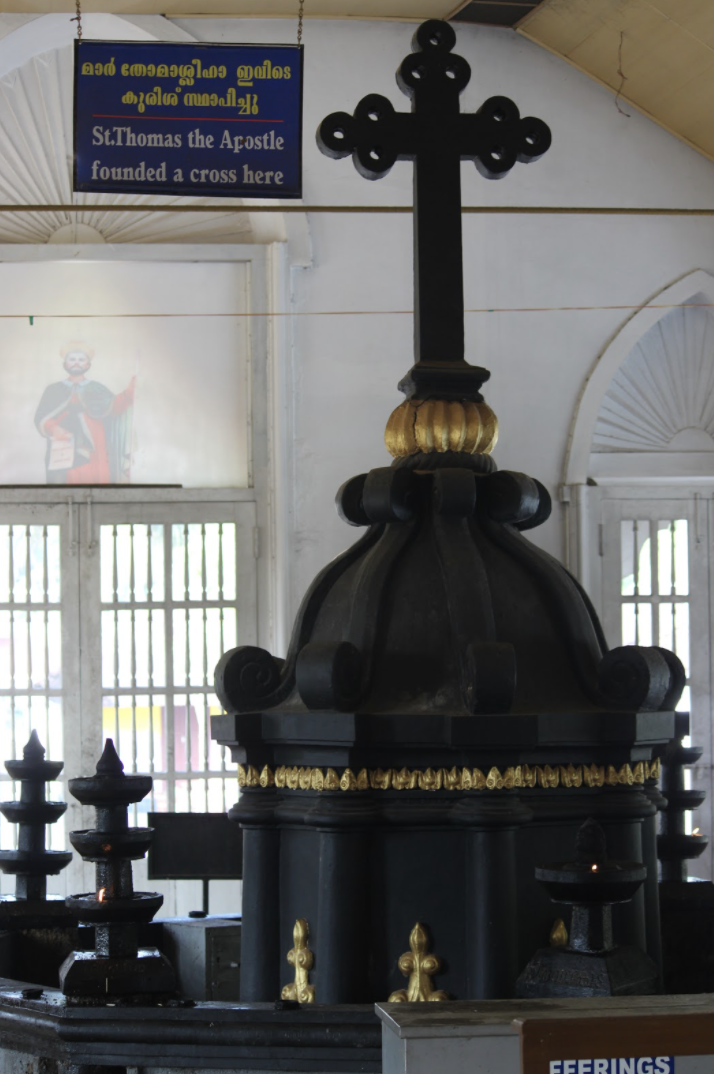
It is believed that St. Thomas established 4 crosses in 4 of the churches that he built. It will be tough to actually verify this fact since the events occurred 2000 years ago. But the community of faithfuls near these churches believe in this. This picture is of the cross which was erected in the St Thomas Syro-Malabar Catholic Church, Palayoor.

This cross is from the St. Mary’s Orthodox Syrian Church, Niranam. Made of granite and at the right side of the church entrance, this relic is assumed to be from 1259, the time at which the third renovation of the church building took place. The base of the cross has carvings resembling a Hindu Temple.

This cross is from the St. Thomas Church, Nilakkal. The uniqueness aspect of the Nilakkal church is that it is the only church among all the other churches which is not built near any water bodies or the coast, but instead is in a forest area, almost 52 kms east to Ranni, Kerala.

This cross was erected near the St. Thomas Church, Kokkamangalam. The speciality of this cross is that it has the names and exterior look of all the seven churches of Kerala carved around the platform on which the cross sits.

The word ‘Thomas’ comes from the Aramaic word “Teoma”, meaning “twins”. Therefore, in the gospels, St. Thomas is known as ‘Didymus’, which also means ‘twins’ (it is a greek word). In Mesopotamia and in the acts of St. Thomas, we come across his name mentioned as ‘Judas Thomas’. Because of the close similarities between Jesus and Thomas, in the Acts of Thomas, an apocryphal written in Syriac in Edessa, composed in the first decade of the third century, St.Thomas is called ‘the twin brother of Jesus’.

There is a beauty and serenity in these churches which can be seen even in their architecture and interiors. A common element that is visible in almost all of the seven and the half churches is the presence of stained glass windows and design above doorways. This photo is from St. Thomas Kottakavu Forane Church, North Paravur.

The churches in Kerala have adopted a lot of elements of the Kerala architectural style and aspects of Kerala’s culture has also been accepted and incorporated by the Christian community. We notice the presence of Kodimaram or the flagstaff in all the churches which is also an integral part of the temple architecture of Kerala. This flagstaff is from the St. Mary’s Orthodox Syrian Church, Niranam.

A shrine is a holy or sacred site dedicated to a specific deity, ancestor, hero, martyr, saint, or similar figure of respect, wherein they are venerated or worshipped. All the seven churches of Kerala that were established by St. Thomas has beautifully preserved Holy Shrines where one feels the positive energy and the power of devotion of the Apostle for Christ. In this photo, we see the Holy Shrine of St. Thomas Church, Kokkamangalam.

St. Thomas was extremely devoted to his Lord and was determined to fulfill the mission entrusted to him by his God. He travelled about 3000 miles to India to spread the way of Christ and the message of peace & love. This photo shows the idol of Jesus in the main shrine of the St. Thomas Church, Kokkamangalam.

It was well known that St. Thomas was immensely attached to his mission and devoted to Jesus. Hence, we see an element of Jesus’s life or story in all the churches. The most common element that one sees is the story of his crucifixion and resurrection. In the St Thomas Syro-Malabar Catholic Church, Palayoor, we see the depiction of the 14 stations on the way to the cross around the Thaliyakkulam or the Baptismal Pond. This photo shows the depiction of Jesus’s resurrection.

In the cultural museum of the St Thomas Syro-Malabar Catholic Church, Palayoor, we see Bible written in different languages, which is not easily accessible anywhere else.

The primary purpose of ringing church bells in modern times is to signify the time for worshippers to gather for a church service. Many Anglican, Catholic and Lutheran churches also ring their bell tower bells three times a day (at 6 a.m., noon and 6 p.m.), summoning the faithful to recite the Lord's Prayer. In the cultural museum of the St Thomas Syro-Malabar Catholic Church, Palayoor, we see an old bell which can be presumed was used in the earlier years.

Many of the churches have strived to provide accurate information about the church and St. Thomas to the faithfuls and the tourists that visit the church. Hence, we see plaques consisting of information for the visitors and devotees. The photo shows one such plaque of the St. Mary’s Orthodox Syrian Church, Niranam.

Ecumenical means representing a number of different Christian Churches. The St. Thomas Church, Nilakkal is the first ecumenial church in the world and a plaque on the church building shows this same information.

Every church, over the years, has tried to maintain the legacy of St. Thomas and his apostolate mission by commemorating him in one way or another, either by having his statues, figurines or relics preserved. We see more of the legacy of St. Thomas in the St. Thomas Syro-Malabar Catholic Church, Palayoor. On the long pathway, from the main gate to the church, granite statues depicting the missionary activities of St. Thomas are erected in 14 stations, seven each on either side. Inaugurated by his Eminence Yokkim Cardinal Maziner, the archbishop of the Cologne archdiocese in Germany on 10th January, 2001. On all Tuesdays, after the evening mass, a sacred procession is conducted around this path, known as the Marthoma Path. One station of this pathway is seen in the photo.

Israel, a middle-eastern country has been highly regarded as the biblical Holy Land by three religious communities of the world - Muslims, Jews & Christians. For Chrisians especially, the country of Israel is of great importance as it is related to the ministry of Jesus.

There are many cities in Israel which have a connection to the origin of the Christian community and are thus considered to be of utmost importance to the history and culture. Nazareth is one such city in Israel with biblical history. The domed basilica of the Annunciation in the old city is believed to be the place where the angel Gabriel told Mary she would bear a child. The photo is of the historical city from 1st century A.D.

Another important city in Israel is - Jerusalem. It is believed that Jesus was brought here occasionally as a child and he preached here as an adult and Jerusalem was the city where Jesus was crucified and was resurrected by God. In this photo, we see the view of Jerusalem from the south in 1st century A.D.

Babylon is a city which is mentioned in the Old Testament and also in the Book of Genesis. This particular photo shows a woodcut print of the medieval depiction of the city of Babylon.

There is an account of Jesus cleansing the temple at temple court in the New Testament of the Bible. There are also accounts of different events happening inside temples in Jerusalem, Israel. A photo of a temple model of Israel is what we see here, which can be believed to be what temples looked like in the Christ Era.

St. Thomas is often referred to as the twin of Jesus and the reason behind this is the similarity in the lives of Jesus and Thomas. Both Jesus & Thomas were born Jews. This might be the reason why Jesus initially preached to Jews and similarly, it can be believed that Thomas also travelled to Malabar coast in Kerala, India because of the presence of the Jewish community and the existing trade relations with the middle-eastern country. The photo we see here is of an ancient Jewish synagogue in Israel.

Galilee is a mountainous region in northern Israel. It’s known for the Sea of Galilee, where Jesus is said to have walked on water. Jesus and St. Thomas are both natives of Galilee and St. Thomas was born in Galilee.

The story of St. Thomas, that we plan on showing through our documentary is a historic incident. It happened over 2000 years ago. St. Thomas is known as the Apostle of India, but his story as an apostle and a disciple of Jesus began even before his journey to India. It is important for us to know what Israel & Syria looked like so many centuries before as that is from where the story begins. Hence, our research team has collected some visuals of the landscape of that era, for our audience to get a feel of the movie and architecture.
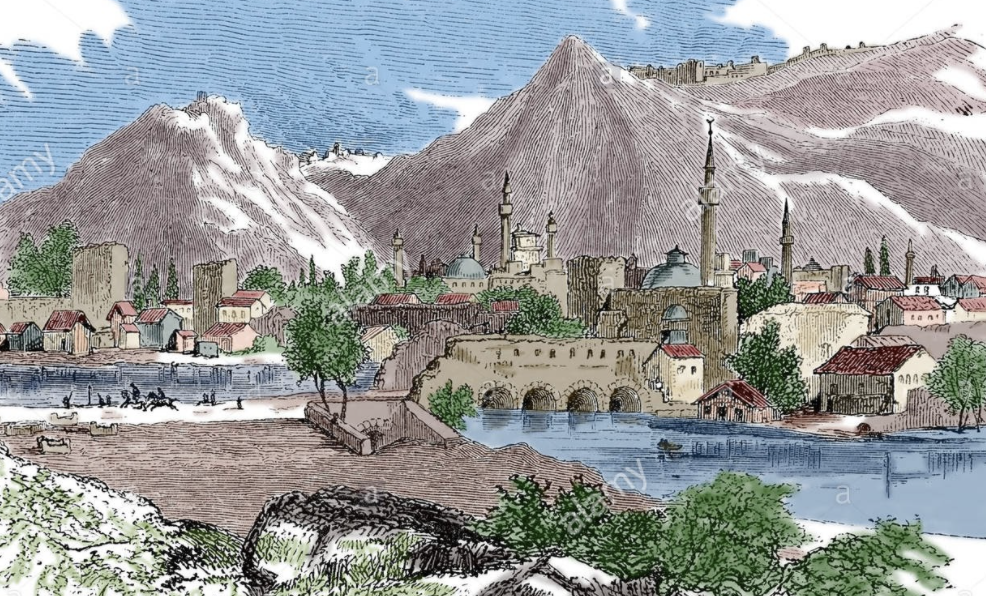
The story of St. Thomas, that we plan on showing through our documentary is a historic incident. It happened over 2000 years ago. St. Thomas is known as the Apostle of India, but his story as an apostle and a disciple of Jesus began even before his journey to India. It is important for us to know what Israel & Syria looked like so many centuries before as that is from where the story begins. Hence, our research team has collected some visuals of the landscape of that era, for our audience to get a feel of the movie and architecture.

The story of St. Thomas, that we plan on showing through our documentary is a historic incident. It happened over 2000 years ago. St. Thomas is known as the Apostle of India, but his story as an apostle and a disciple of Jesus began even before his journey to India. It is important for us to know what Israel & Syria looked like so many centuries before as that is from where the story begins. Hence, our research team has collected some visuals of the landscape of that era, for our audience to get a feel of the movie and architecture.

The story of St. Thomas, that we plan on showing through our documentary is a historic incident. It happened over 2000 years ago. St. Thomas is known as the Apostle of India, but his story as an apostle and a disciple of Jesus began even before his journey to India. It is important for us to know what Israel & Syria looked like so many centuries before as that is from where the story begins. Hence, our research team has collected some visuals of the landscape of that era, for our audience to get a feel of the movie and architecture.

The story of St. Thomas, that we plan on showing through our documentary is a historic incident. It happened over 2000 years ago. St. Thomas is known as the Apostle of India, but his story as an apostle and a disciple of Jesus began even before his journey to India. It is important for us to know what Israel & Syria looked like so many centuries before as that is from where the story begins. Hence, our research team has collected some visuals of the landscape of that era, for our audience to get a feel of the movie and architecture.

The story of St. Thomas, that we plan on showing through our documentary is a historic incident. It happened over 2000 years ago. St. Thomas is known as the Apostle of India, but his story as an apostle and a disciple of Jesus began even before his journey to India. It is important for us to know what Israel & Syria looked like so many centuries before as that is from where the story begins. Hence, our research team has collected some visuals of the landscape of that era, for our audience to get a feel of the movie and architecture.

The story of St. Thomas, that we plan on showing through our documentary is a historic incident. It happened over 2000 years ago. St. Thomas is known as the Apostle of India, but his story as an apostle and a disciple of Jesus began even before his journey to India. It is important for us to know what Israel & Syria looked like so many centuries before as that is from where the story begins. Hence, our research team has collected some visuals of the landscape of that era, for our audience to get a feel of the movie and architecture.

The story of St. Thomas, that we plan on showing through our documentary is a historic incident. It happened over 2000 years ago. St. Thomas is known as the Apostle of India, but his story as an apostle and a disciple of Jesus began even before his journey to India. It is important for us to know what Israel & Syria looked like so many centuries before as that is from where the story begins. Hence, our research team has collected some visuals of the landscape of that era, for our audience to get a feel of the movie and architecture.

We know that St. Thomas arrived on a ship to Kerala from Israel, as there was a big community of Jewish population on the Malabar Coast of Kerala and established trade routes were present to middle-eastern countries. Many historians and scholars believe that the route the ship must have taken would have been through the current Arabian Sea.

St. Thomas’s was highly devoted to Jesus and this made him determined for his mission in India as an apostolate. On one of his voyages to India, the ship encountered gigantic waves and rough sea. The merchants onboard were very tensed and that is when they saw St. Thomas was deep in his prayer. Even in the most dire situations, St. Thomas was always dedicated to his cause and mission.

It is presumed by historians and scholars that the strong presence of Jewish communities in Kerala in the first century is what might have acted as a motivation for St. Thomas to arrive on the Malabar coast for his apostolate missions. The photo we see here is a of an Early Cochin Jew family.
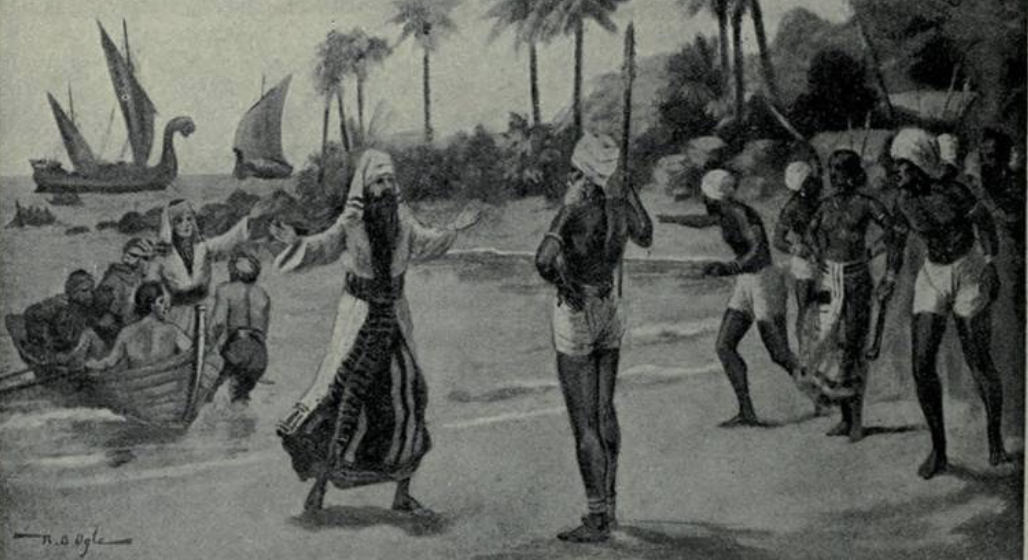
The Jewish or Cochin Jews are considered to be the earliest Jews to migrate to India. It is postulated that the roots of the first Jewish settlers can be traced back to the time of King Solomon, who reigned the United Kingdom of Israel from around 970 to 931 BCE. The photo we see here is a depiction of the arrival of the first Jews on the coast of Kerala.

This history of the arrival of Jews is undoubtable even among historians or scholars. Many archives and accounts of this part of the history are found even now. This particular photo is a painting by the Portuguese of the 16th century depicting the Malabarese Jews.

In this picture, we see remnants of a Jewish burial site from Wayanad, a district in Kerala.
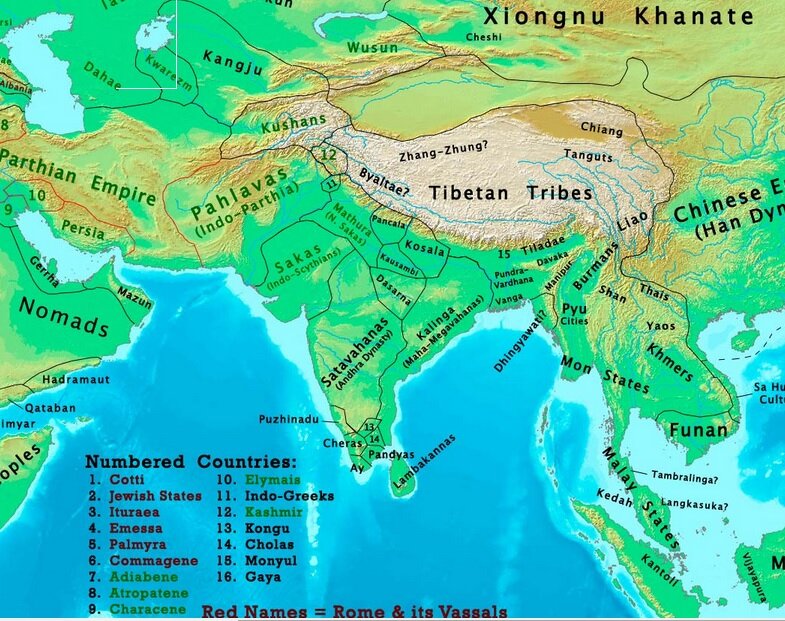
In this picture, what we see is a map of Indian subcontinent from 1 A.D. to 1000 A.D.

The desserts of Israel & Syria, the country in which Jesus and St. Thomas was born. St. Thomas was a native from Galilee, which is a region in northern Israel. Syria was one of the areas through which St. Thomas travelled on his way to India.